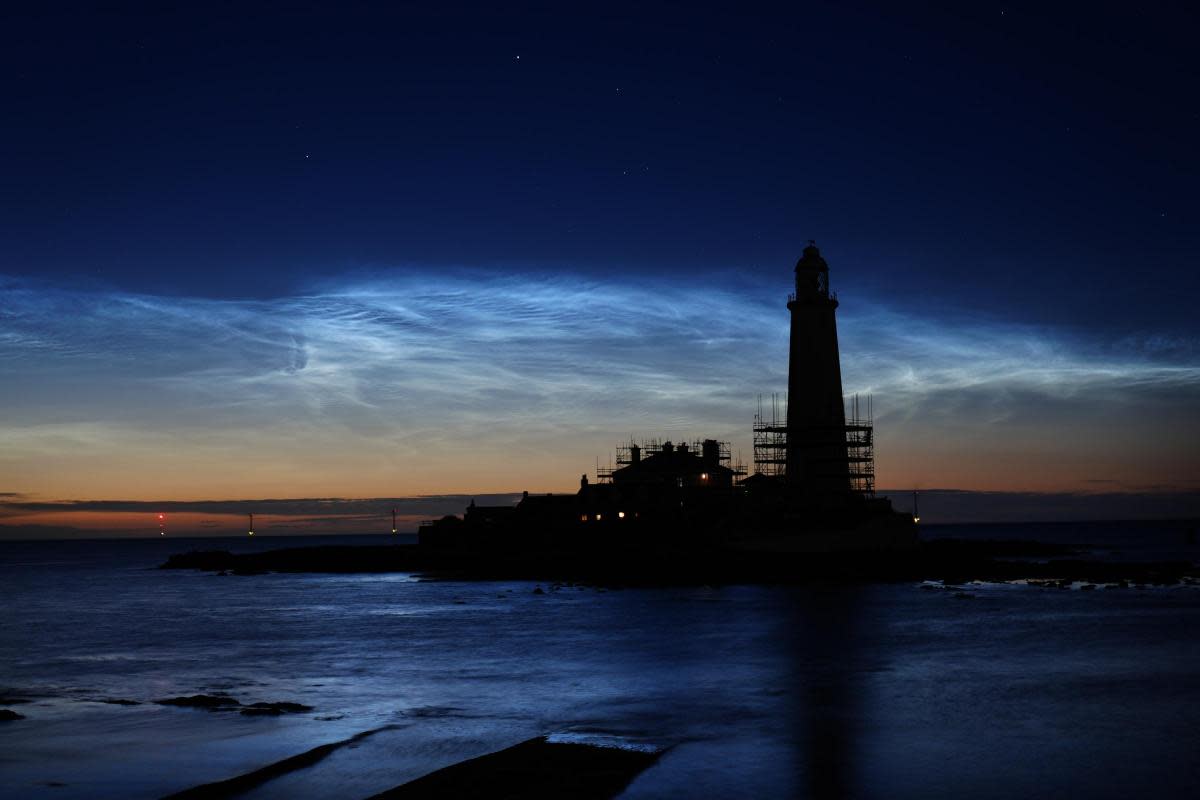'Very rare' clouds captured over the skies of the North East in stunning images

A 'very rare' phenomenon has been spotted over the skies of the North East after stunning images were captured in the region in the early hours of Friday (July 5).
Noctilucent clouds or 'night clouds' were seen over St Mary's Lighthouse in Whitley Bay, North Tyneside, at about 01.45 am - in what has been described as 'stunning' images.
Noctilucent clouds or night clouds over St Mary's Lighthouse in Whitley Bay, North Tyneside, taken at 01.45 am (Image: PA MEDIA)
In the images, the clouds and sky were a silvery blue.
What are Noctilucent clouds?
According to the Met Office: "Noctilucent clouds are extremely rare collections of ice crystals, occasionally appearing in late clear summer evenings after sunset, but before it gets completely dark.
Noctilucent clouds or night clouds over St Mary's Lighthouse in Whitley Bay, North Tyneside, taken at 01.45 am (Image: PA MEDIA)
"They become visible about the same time as the brightest stars appear and often stay visible after dark because they are still reflecting sunlight due to their great height. They are higher up than any other clouds, occupying the layer of atmosphere known as the Mesosphere, and are only seen at latitudes between 45°N and 80°N in the Northern Hemisphere, and equivalent latitudes in the southern hemisphere.
Most read
71 new homes in Consett could be rejected by Durham County Council
LIVE: A66 closed by police as air ambulance called to crash
Postcode Lottery results across the North East for June
"They are seen less often in the southern hemisphere as there is very little land and very few people there. Only the southern tip of Argentina and Chile, and the Antarctic are at the correct latitude."
How do Noctilucent clouds form?
The Met Office adds: "Like many clouds, noctilucent clouds need water vapour, dust, and very low temperatures to form. Low temperatures are easily attainable in the Mesosphere, but water vapour and dust are in short supply.
"The dust may well come from tiny meteors from space, although dust from volcanoes or man-made pollutants may add to these. Scientists believe that the moisture comes through gaps in the tropopause, or perhaps forms from the chemical reaction of methane and other chemicals."

 Yahoo News
Yahoo News 
